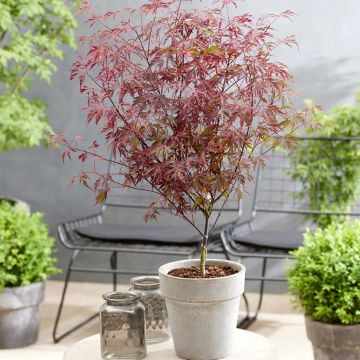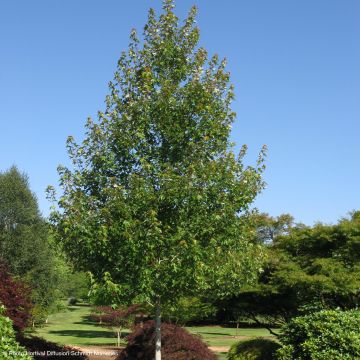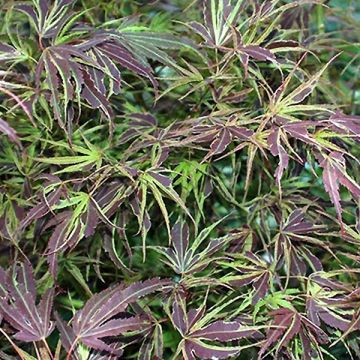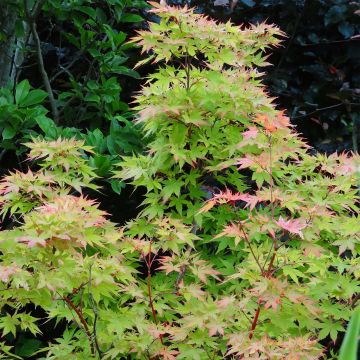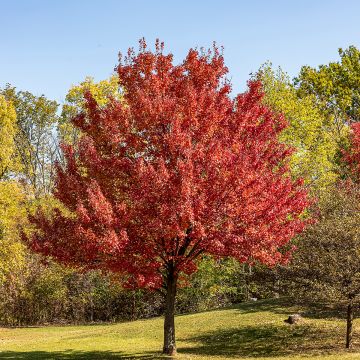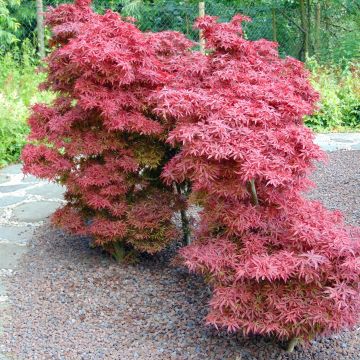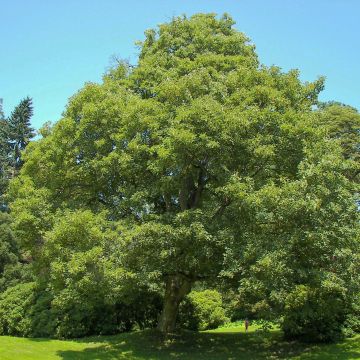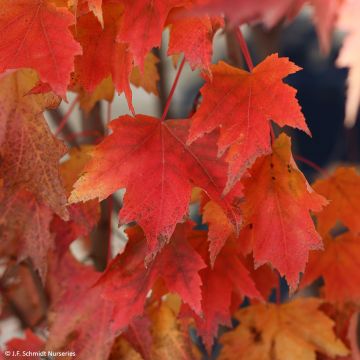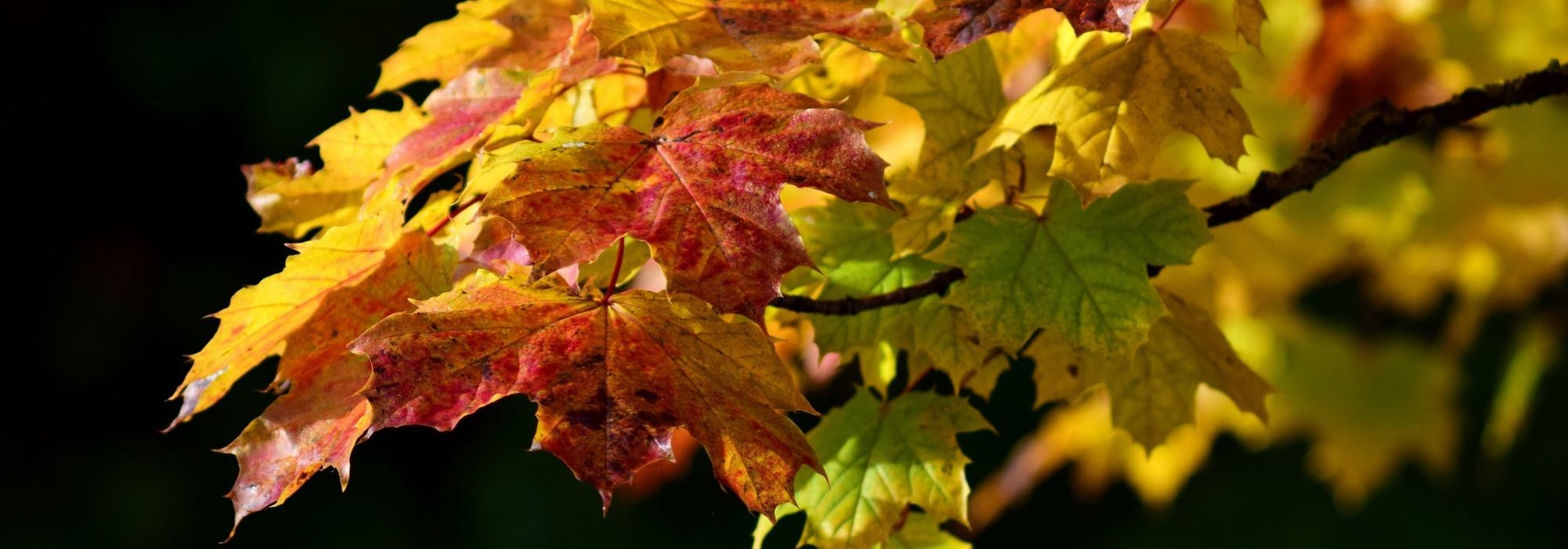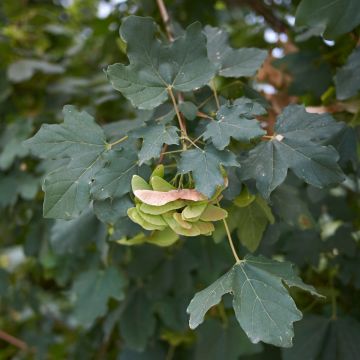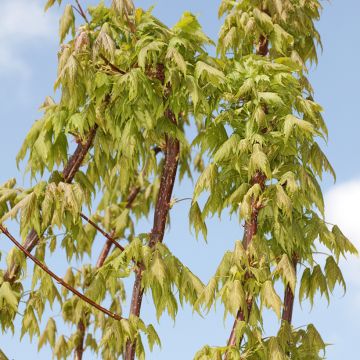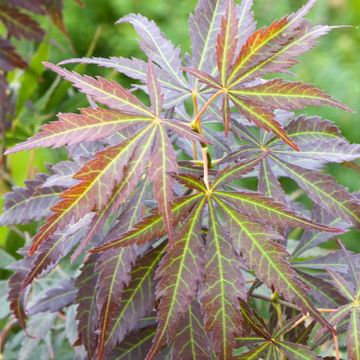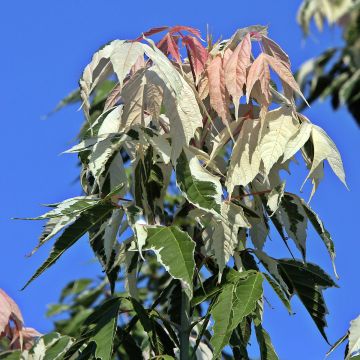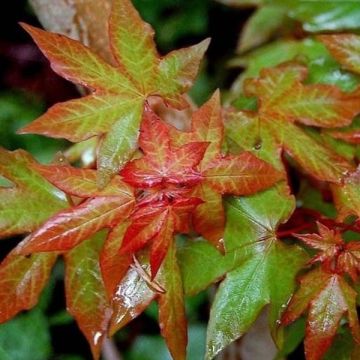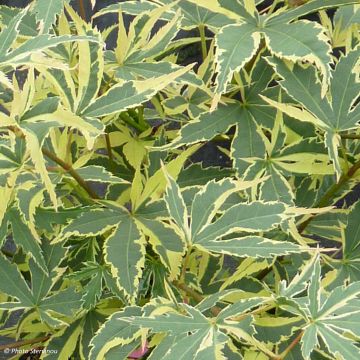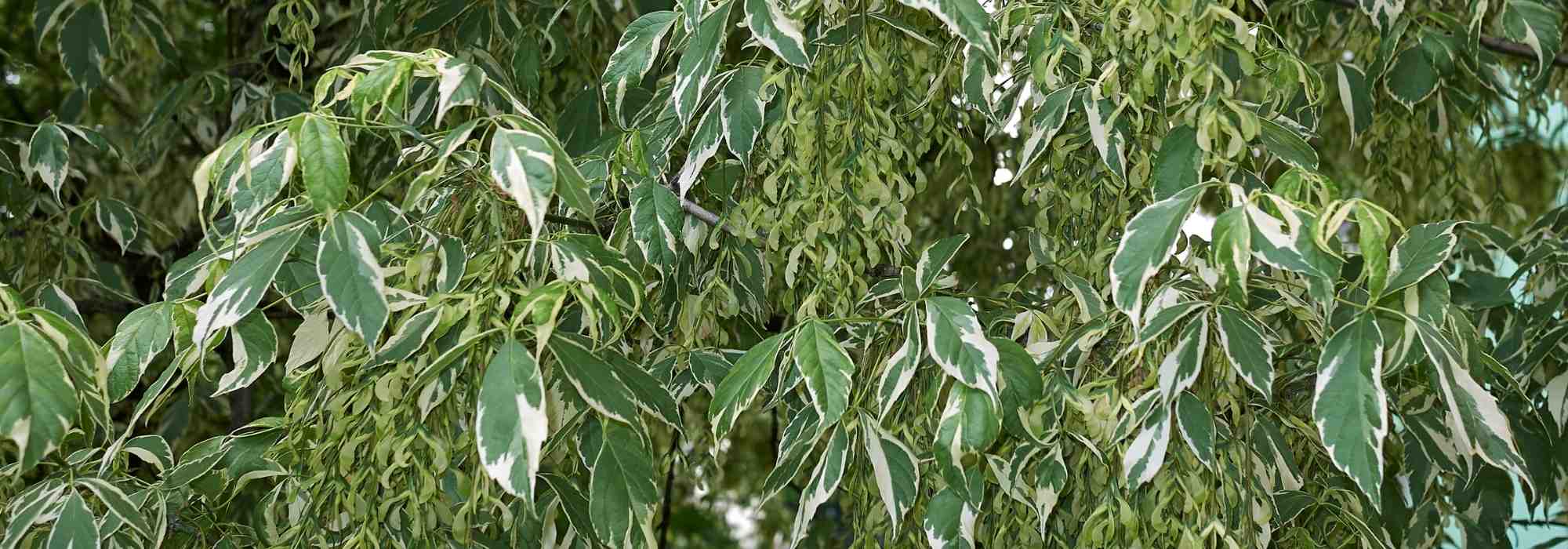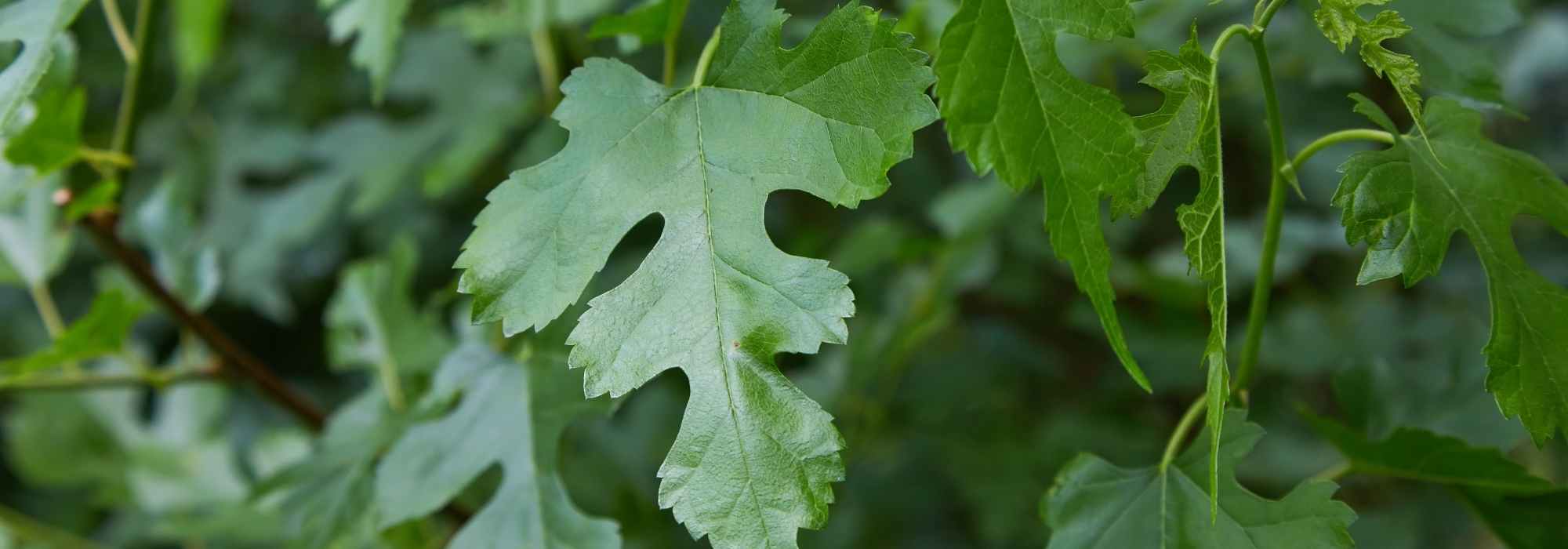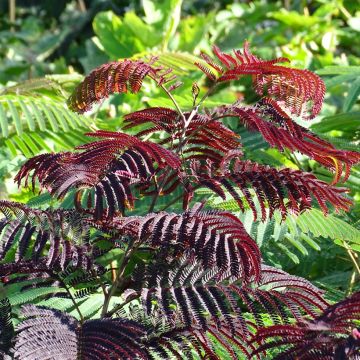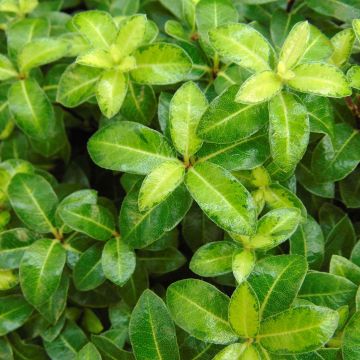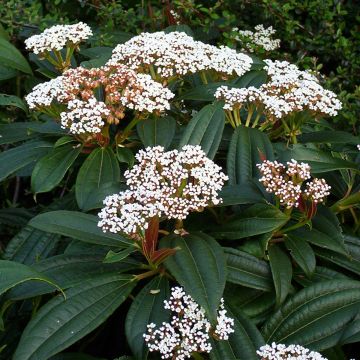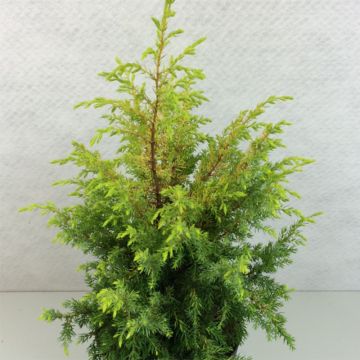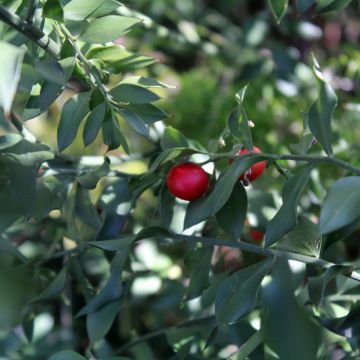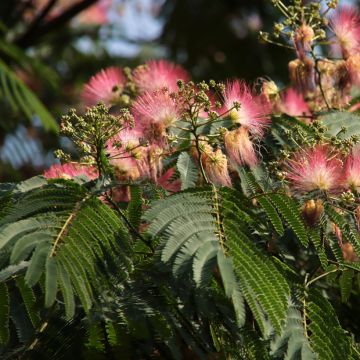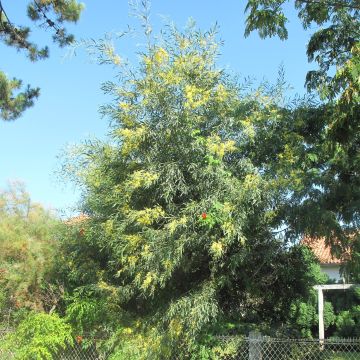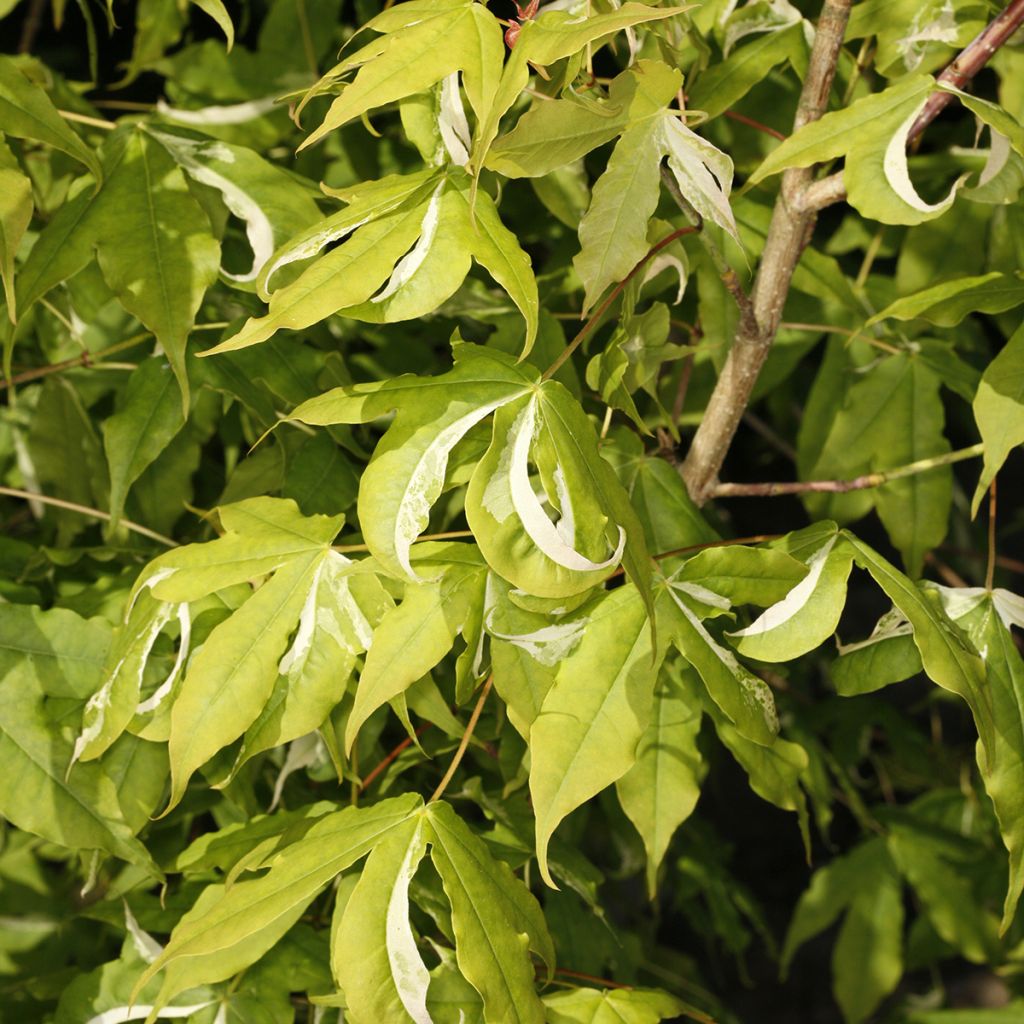

Acer truncatum Akikaze-nishiki - Maple
Acer truncatum Akikaze-nishiki - Maple
Acer truncatum Akikaze-nishiki
Shantung Maple, Purpleblow Maple
Special offer!
Receive a €20 voucher for any order over €90 (excluding delivery costs, credit notes, and plastic-free options)!
1- Add your favorite plants to your cart.
2- Once you have reached €90, confirm your order (you can even choose the delivery date!).
3- As soon as your order is shipped, you will receive an email containing your voucher code, valid for 3 months (90 days).
Your voucher is unique and can only be used once, for any order with a minimum value of €20, excluding delivery costs.
Can be combined with other current offers, non-divisible and non-refundable.
Why not try an alternative variety in stock?
View all →This plant carries a 24 months recovery warranty
More information
We guarantee the quality of our plants for a full growing cycle, and will replace at our expense any plant that fails to recover under normal climatic and planting conditions.
Would this plant suit my garden?
Set up your Plantfit profile →
Description
The Acer truncatum 'Akikaze-nishiki' is a variety of Shantung Maple easily recognisable by its foliage, which is as unique as it is ornamental. Its highly cut leaves have lobes that are sometimes linear and sometimes incurved. Their green colour is variegated with white, giving a bright aspect to the vegetation. This small tree, which grows relatively quickly, generally has multiple trunks and supports an irregular and dense crown. Often as wide as it is tall, it ignites in autumn with shades of yellow, orange, and red before the leaves fall. Very hardy, it grows in practically all soils, except for those that are truly calcareous, in full sun or under light shade.
Maples, formerly classified in the eponymous Aceraceae family, which is now extinct in botanical classifications, now belongs to the Sapindaceae family, a large family with 140 genera and nearly 2000 species (including at least 150 for the genus Acer alone). The Acer truncatum, Shantung Maple or Painted Maple, is a species native to Asia, whose natural habitat covers a large part of northern China (about ten provinces where it is known by the vernacular name yuan bao qi), Korea, eastern Siberia, and Japan. In these regions, it can reach a height of up to 15m (49ft), but in Europe, where it was introduced in 1881, it does not exceed 7 to 9m (23 to 29ft) in height. This Maple has a rough and deeply fissured bark, with a more or less dark brown colour. It has mostly 5-lobed (3 to 7) leaves that are 8 to 12cm (3 to 5in) wide and 60 to 10cm (24 to 4in) long. Flowering occurs in May, approximately at the same time as leaf emergence, in the form of terminal corymbs that are 6 to 8cm (2 to 3in) in diameter, initially erect and then drooping. They consist of 3 to 10 flowers that are 1cm (1in) in diameter and yellow-green in colour. They develop into fruits (double samaras, the "helicopters" of our childhood) that are 3cm (1in) long and red-purple in colour.
Akikaze-nishiki is a variegated cultivar of the species. It grows relatively quickly and reaches a height of about 4m (13ft) and a spread of the same size in 10 years of cultivation, and at maturity, about 6m (20ft). The trunk generally divides into multiple axes, giving the plant a V-shaped habit dominated by a wide and very dense crown, which is both irregular and well balanced. This small tree thus presents a beautiful winter silhouette when the leaves have fallen. These leaves are the main attraction of this variety, with their beautiful cream-white variegation that varies greatly. Some leaves have only one lobe with this coloration, while others are almost entirely white. In spring, the young leaves also have pink hues among the white areas, which are very decorative alongside the tender green, but these hues fade as the green becomes deeper. This variability in colours is combined with astonishing polymorphism, with some leaves lying flat and having balanced lobes, while others seem to draw arabesques with their recurved lobes. The yellowish corymbs of flowers, while not exceptional, add a touch of colour to this spring harmony. In autumn, the leaves turn yellow and take on beautiful shades of red and orange, similar to some Japanese Maples.
Unlike these, this variety is more accommodating in cultivation. While it also grows in acidic soils, it tolerates a bit of limestone without any problem. Similarly, it grows well in full sun, tolerates partial shade, withstands heat and wind, and demonstrates exemplary hardiness, down to -28°C (1°F). It also tolerates moist soils as well as drier conditions and requires virtually no maintenance.
Easy to cultivate, this well-composed Maple is truly ornamental, and its reasonable size allows it to find a place in most gardens. Splendid as a standalone tree on a lawn, it can also be integrated into a mixed border. Due to its great versatility in terms of growing conditions, you can associate it with many flowering shrubs, such as Weigela florida Alexandra. Its dark purple foliage, reaching a height of 2m (7ft), will create a strong contrast at the base of the Maple, while its bright pink flowering will burst in May. Also consider grey foliage, such as that of varieties of Perovskia, charming shrubs with blue-mauve summer flowers and aromatic grey foliage to the touch. And for autumn, plant a specimen of Pheasant Berry (Leycesteria formosa), which is a medium-sized shrub that blooms in late summer and then produces decorative fruits late in the season, while its foliage takes on lovely autumnal colours.
Plant habit
Flowering
Foliage
Botanical data
Acer
truncatum
Akikaze-nishiki
Aceraceae
Shantung Maple, Purpleblow Maple
Cultivar or hybrid
Other Acer - Maple tree
View all →Planting and care
Acer truncatum can be planted in the spring or autumn in acidic, neutral, or moderately chalky soils (acceptable pH range: 5.6 to 7.8). As for the soil composition, it accepts almost all types of terrain, clayey, sandy, loamy, or peaty. It tolerates heat and relatively dry soils, as well as slightly moist ones. It grows well in both full sun and partial shade, in summary, it is very adaptable, especially since it also tolerates wind. Choose a location where it will have enough space to grow, as it grows approximately as wide as it does tall. Soak the plant in a bucket for fifteen minutes before planting, add some compost to the hole, and after planting, water it thoroughly. Monitor watering during the first two years and provide additional water, especially in the summer, to help it establish. Once well-established, it can go without water in the summer and requires no maintenance.
Planting period
Intended location
Care
Planting & care advice
This item has not been reviewed yet - be the first to leave a review about it.
Similar products
Haven't found what you were looking for?
Hardiness is the lowest winter temperature a plant can endure without suffering serious damage or even dying. However, hardiness is affected by location (a sheltered area, such as a patio), protection (winter cover) and soil type (hardiness is improved by well-drained soil).

Photo Sharing Terms & Conditions
In order to encourage gardeners to interact and share their experiences, Promesse de fleurs offers various media enabling content to be uploaded onto its Site - in particular via the ‘Photo sharing’ module.
The User agrees to refrain from:
- Posting any content that is illegal, prejudicial, insulting, racist, inciteful to hatred, revisionist, contrary to public decency, that infringes on privacy or on the privacy rights of third parties, in particular the publicity rights of persons and goods, intellectual property rights, or the right to privacy.
- Submitting content on behalf of a third party;
- Impersonate the identity of a third party and/or publish any personal information about a third party;
In general, the User undertakes to refrain from any unethical behaviour.
All Content (in particular text, comments, files, images, photos, videos, creative works, etc.), which may be subject to property or intellectual property rights, image or other private rights, shall remain the property of the User, subject to the limited rights granted by the terms of the licence granted by Promesse de fleurs as stated below. Users are at liberty to publish or not to publish such Content on the Site, notably via the ‘Photo Sharing’ facility, and accept that this Content shall be made public and freely accessible, notably on the Internet.
Users further acknowledge, undertake to have ,and guarantee that they hold all necessary rights and permissions to publish such material on the Site, in particular with regard to the legislation in force pertaining to any privacy, property, intellectual property, image, or contractual rights, or rights of any other nature. By publishing such Content on the Site, Users acknowledge accepting full liability as publishers of the Content within the meaning of the law, and grant Promesse de fleurs, free of charge, an inclusive, worldwide licence for the said Content for the entire duration of its publication, including all reproduction, representation, up/downloading, displaying, performing, transmission, and storage rights.
Users also grant permission for their name to be linked to the Content and accept that this link may not always be made available.
By engaging in posting material, Users consent to their Content becoming automatically accessible on the Internet, in particular on other sites and/or blogs and/or web pages of the Promesse de fleurs site, including in particular social pages and the Promesse de fleurs catalogue.
Users may secure the removal of entrusted content free of charge by issuing a simple request via our contact form.
The flowering period indicated on our website applies to countries and regions located in USDA zone 8 (France, the United Kingdom, Ireland, the Netherlands, etc.)
It will vary according to where you live:
- In zones 9 to 10 (Italy, Spain, Greece, etc.), flowering will occur about 2 to 4 weeks earlier.
- In zones 6 to 7 (Germany, Poland, Slovenia, and lower mountainous regions), flowering will be delayed by 2 to 3 weeks.
- In zone 5 (Central Europe, Scandinavia), blooming will be delayed by 3 to 5 weeks.
In temperate climates, pruning of spring-flowering shrubs (forsythia, spireas, etc.) should be done just after flowering.
Pruning of summer-flowering shrubs (Indian Lilac, Perovskia, etc.) can be done in winter or spring.
In cold regions as well as with frost-sensitive plants, avoid pruning too early when severe frosts may still occur.
The planting period indicated on our website applies to countries and regions located in USDA zone 8 (France, United Kingdom, Ireland, Netherlands).
It will vary according to where you live:
- In Mediterranean zones (Marseille, Madrid, Milan, etc.), autumn and winter are the best planting periods.
- In continental zones (Strasbourg, Munich, Vienna, etc.), delay planting by 2 to 3 weeks in spring and bring it forward by 2 to 4 weeks in autumn.
- In mountainous regions (the Alps, Pyrenees, Carpathians, etc.), it is best to plant in late spring (May-June) or late summer (August-September).
The harvesting period indicated on our website applies to countries and regions in USDA zone 8 (France, England, Ireland, the Netherlands).
In colder areas (Scandinavia, Poland, Austria...) fruit and vegetable harvests are likely to be delayed by 3-4 weeks.
In warmer areas (Italy, Spain, Greece, etc.), harvesting will probably take place earlier, depending on weather conditions.
The sowing periods indicated on our website apply to countries and regions within USDA Zone 8 (France, UK, Ireland, Netherlands).
In colder areas (Scandinavia, Poland, Austria...), delay any outdoor sowing by 3-4 weeks, or sow under glass.
In warmer climes (Italy, Spain, Greece, etc.), bring outdoor sowing forward by a few weeks.






























